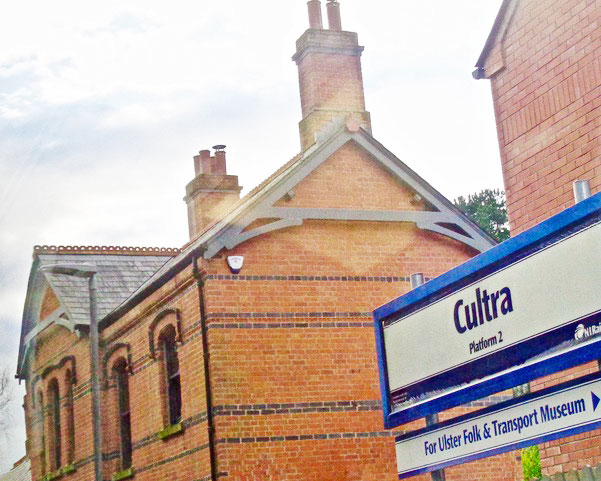Bangor Historical Society’s meeting on a very blustery and wet 12th January was well attended with about 50 Ferroequinologists assembled at the Fountain Centre on Queen’s Parade to learn about the Belfast to Bangor Railway Line. Chairman Ian Wilson introduced these “lovers of iron horses” to our speaker Peter Vannucci, who had worked in Northern Ireland Railway’s IT Department, went on to entertain us with his extensive research into all of the stations between Belfast and Bangor. His talk, with slides, was titled A Rail Journey Through Time on the Bangor to Belfast Line, and covered the development of the railway from its beginnings mid-19th century up to the present day.
Although confessing that he had no love for steam trains, Peter showed great enthusiasm for the stories about the various stations, bridges, platforms, station-masters’ houses, subways and ancillary buildings connected with this modern mode of travel. Everyone in the audience had travelled by train at some time, and some were regular users of the service. And most of us appreciated our travel passes!
The station buildings, originally meant to be where the Savoy now stands, were erected in 1864–1865 to designs by the architect Sir Charles Lanyon, but they have changed in appearance over the years. A slide from the 1890s showed the elegant Italianate exterior. The Station Master’s house was on the site of the present bus station that was established in the 1950s at the height of Bangor’s reputation as a holiday resort.
In the 1960s the Station's brick-work was plastered over. Still later it lost the ticket hall and the taxi kiosk but had the front filled in where previously it had been open and susceptible to draughts. Some in the audience admitted visiting The Buffer Inn on the left of the entrance. Today we have a modern design with a ticket office, loos, shop and cafe (neither open at present), seating, an awkward staircase and only one up-escalator.
The shortest station on the line was Crawfordsburn, which was attacked by terrorists and had its platform destroyed by fire. The youngest is Seahill, and Bangor West is the only one still staffed part-time. If you look carefully you can catch a glimpse of a hidden and now disused siding at Cultra, meant to service the Folk and Transport Museum, and Marino was entered through someone’s back garden, formerly the station master’s house.

Cultra, being a posh area, had the only covered footbridge and its station buildings have been redeveloped after many years of being derelict. Holywood, the oldest station, originally in Redburn Square, required a diversion around the town and a new embankment was built on the sea side of the bypass. A panoramic view of Belfast Lough from the train here facilitates a sight of the supports of the old Holywood pier and coal quay, victims of an out of control fireworks display. Marino also suffered from the troubles with damage caused by a rucksack bomb. The Fraser Street Halt was built especially for shipyard workers but only went one way, to get them to work on time. They had to make their own way home!
Among many entertaining side stories was the one about the choice of seating in our modern carriages. A selection of different seats was set up in the staff training room where the employees had bought a TV to watch, in between duties, the 2002 World Cup. Our present rather fetching blue plush upholstered ones won the popular vote. Unfortunately, the TV set was not an addition to the comfort of passengers but raffled off after the footie ended.
The “dieselisation" of the line was perhaps the saving of the service as starting up a huge steam engine takes a long time and really isn’t very efficient. Some distressing fatalities were noted, as was the Ballymacarrett disaster in 1945 when 22 passengers and staff were killed but the line was re-opened at 11am, about three hours after the accident. Peter told many other stories of fog, floods and a banshee at Ballymacarrett, all of which kept us fascinated for over an hour.
Our next meeting is on Thursday February 9th when we look forward to Revd. Mercia Flanagan speaking on local author CS Lewis, sure to be another interesting and informative evening. One of his quotes will surely fit the bill - "A pleasure is not full grown until it is remembered”. Visitors are welcome to join us at a small charge. We start at 8pm and usually finish around 9.30pm.
